Numismatic Articles
Van Arsdell 2015g (Info)
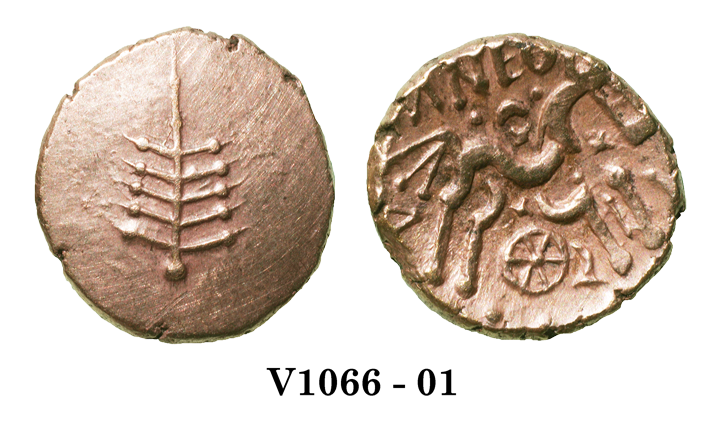
Semiotics of Celtic Coins XII – Mapping Replicas
By Robert D. Van Arsdell
Mapping is an important concept for semiotic analysis, because we reverse the process to interpret the meaning of Celtic coin images.
The simplest introduction to mapping involves the emblems found on many coin types. These emblems were well-known symbols to the people viewing the coins in ancient times. The rulers copied the imagery onto their coins knowing the meaning would be understood.
Emblems like the one shown on V1066 are Replicas produced via Ratio Facilis. The “Ratio Facilis” alerts us that the relationship between the original symbol and the image on the coin is one of a simple copy. Enough of the details of the original symbol have been carried over to the coin so everyone recognizes the emblem.
Everyday Symbols
We can use a hypothetical view of symbol use in Dobunnic territory to show how mapping works.
Allen identified the “tree” symbol on Dobunnic staters as an emblem, possibly one that appeared on shields (info). Let’s accept Allen’s suggestion at face value, and add another guess that the symbol was also painted onto Dobunnic houses. Eventually, the rulers got around to putting it on their gold staters. The way the symbol was copied onto different surfaces can be mapped thus:
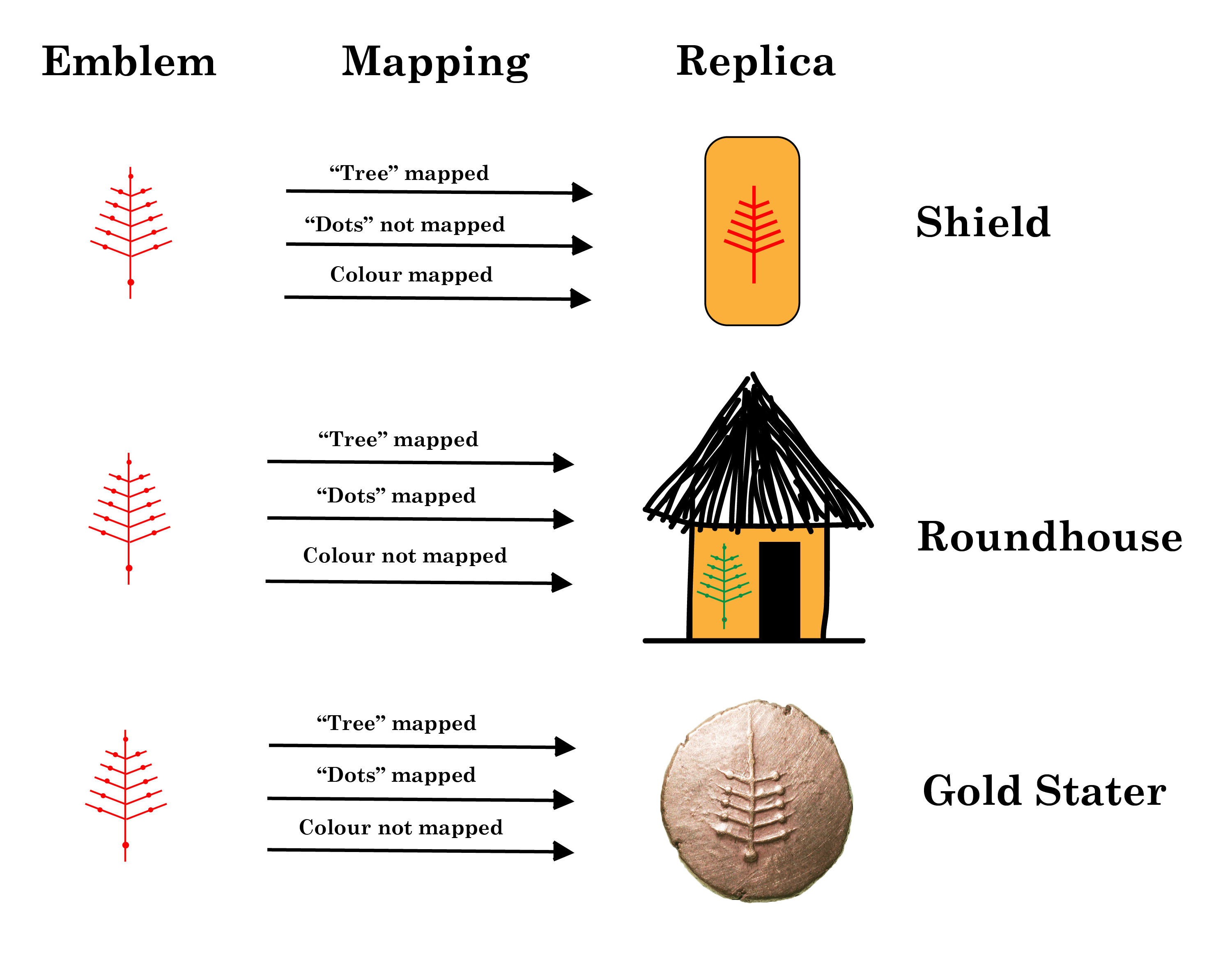
The diagram shows which details have been mapped (or copied) onto three different surfaces. Accept that in each Replica, the idea of the Dobunnic Emblem has been successfully communicated.
The Dobunnic Emblem
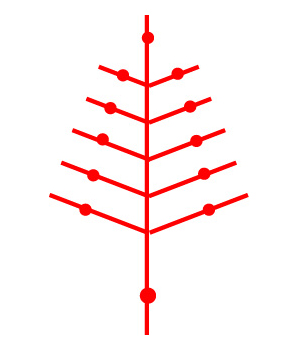
The original symbol is defined as a ten-branched “tree” with a dot on each branch. Another dot appears on the upper and lower part of the tree trunk. The emblem is conceived in a brilliant red colour.
The Shield
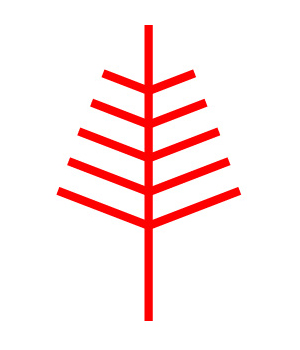
The “tree” is painted on Dobunnic shields in the brilliant red colour….but all the dots are missing. Presumably it took too much time to paint the dots onto thousands of shields, and they evidently weren’t all that important.
Thus, the “tree” has been mapped, and the colour, but not the dots.
The Roundhouse
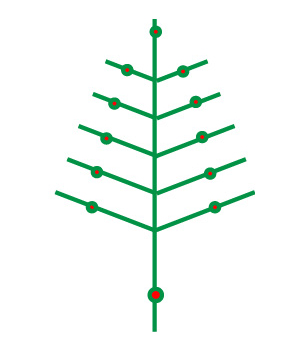
The “tree” is also painted onto the side of Dobunnic roundhouses – dots and all. But it appears the occupants of the house didn’t like the garish red colour, and have changed it to green. Note the dots have been painted with little red centres, for some reason we will never understand.
In this case, the “tree” and the dots have been mapped. However, the colour has not been mapped, and evidently it wasn’t important. Perhaps if a neighbouring tribe had a blue tree emblem, the colour would have been important – and mapping it would have been necessary.
The Gold Stater
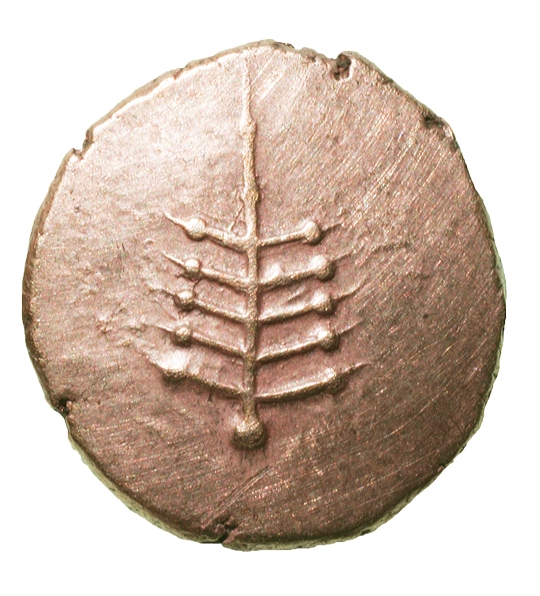
On the gold stater, the “tree” and the dots have been mapped. But, there isn’t any way to map the colour. Again, the colour wasn't important.
An alternative suggestion could be that the red-gold colour of the stater was felt to map the colour of the Emblem. The Emblem never appears on silver coins, perhaps because the colour couldn’t be mapped onto a white metal. But these two ideas can’t be proven and are most unlikely.
Image analysis via reverse mapping
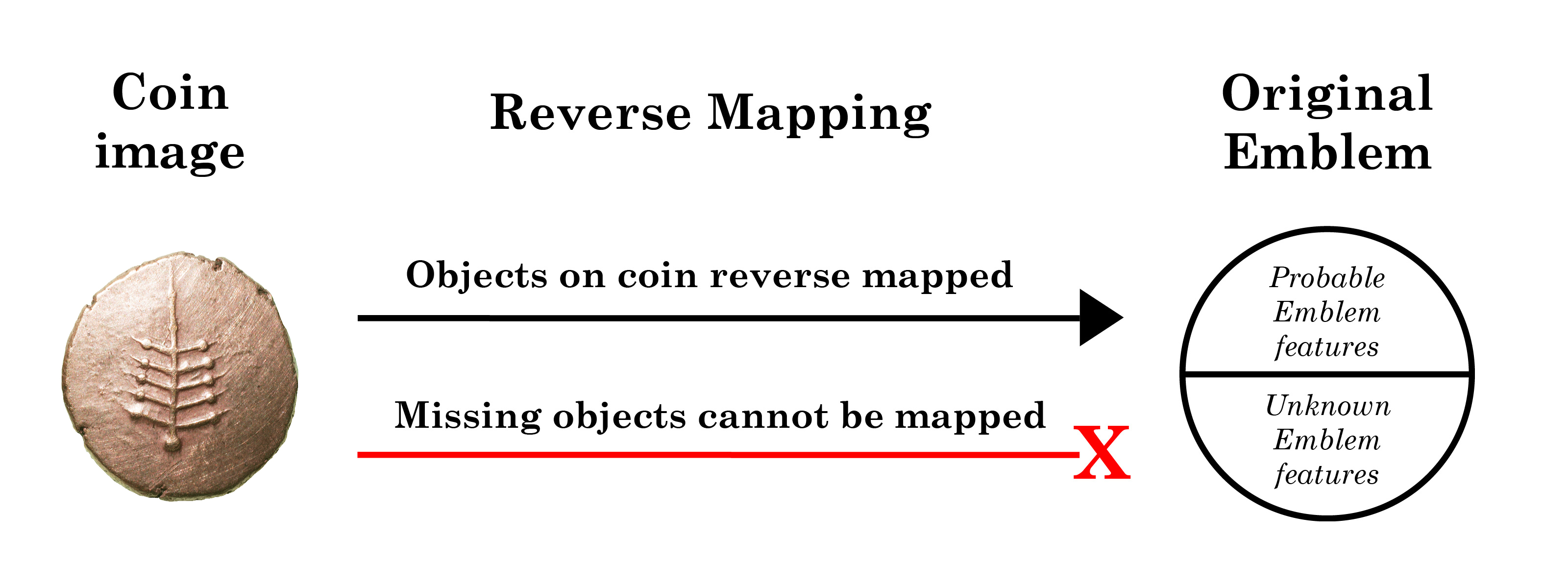
The figure above shows how Replica images are analyzed. Here, we only have the surviving coins. We have no shields, nor roundhouses to show us what all the variations of the Dobunnic Emblem looked like.
We know the original emblem probably consisted of a ten-branched “tree” with dots. But we don’t know anything else. For example, the colour of the Emblem is completely unknown.
Furthermore, if the original symbol included a horse and rider holding the “tree” we have no way of knowing this.
Thus, by reverse mapping a coin image we can only suggest an imperfect idea of the original symbol. This imperfection is another reason why we should undercode the meaning of Replicas.
Eco does indicate that Replicas can be both undercoded and overcoded (info). Consequently, a Replica can have compact sememe diagram, with a simple meaning; or it can have a very elaborate one, with a complex meaning.
But before we are tempted to overcode the meaning, we would need a more perfect understanding of the original symbol. Some sort of commentary from ancient times about its use and the way people felt about it might fill in some of the missing details.
But this perfect understanding and the helpful commentary are never forthcoming – forcing us to undercode the meaning of Replicas we come across.
The situation will be different for Inventions, because the mapping is radically different. Inventions are the kinds of images that can give us insight into ancient times.
But before we turn to Inventions, there is one unexpected way Replicas can help us with numismatic work.
End
